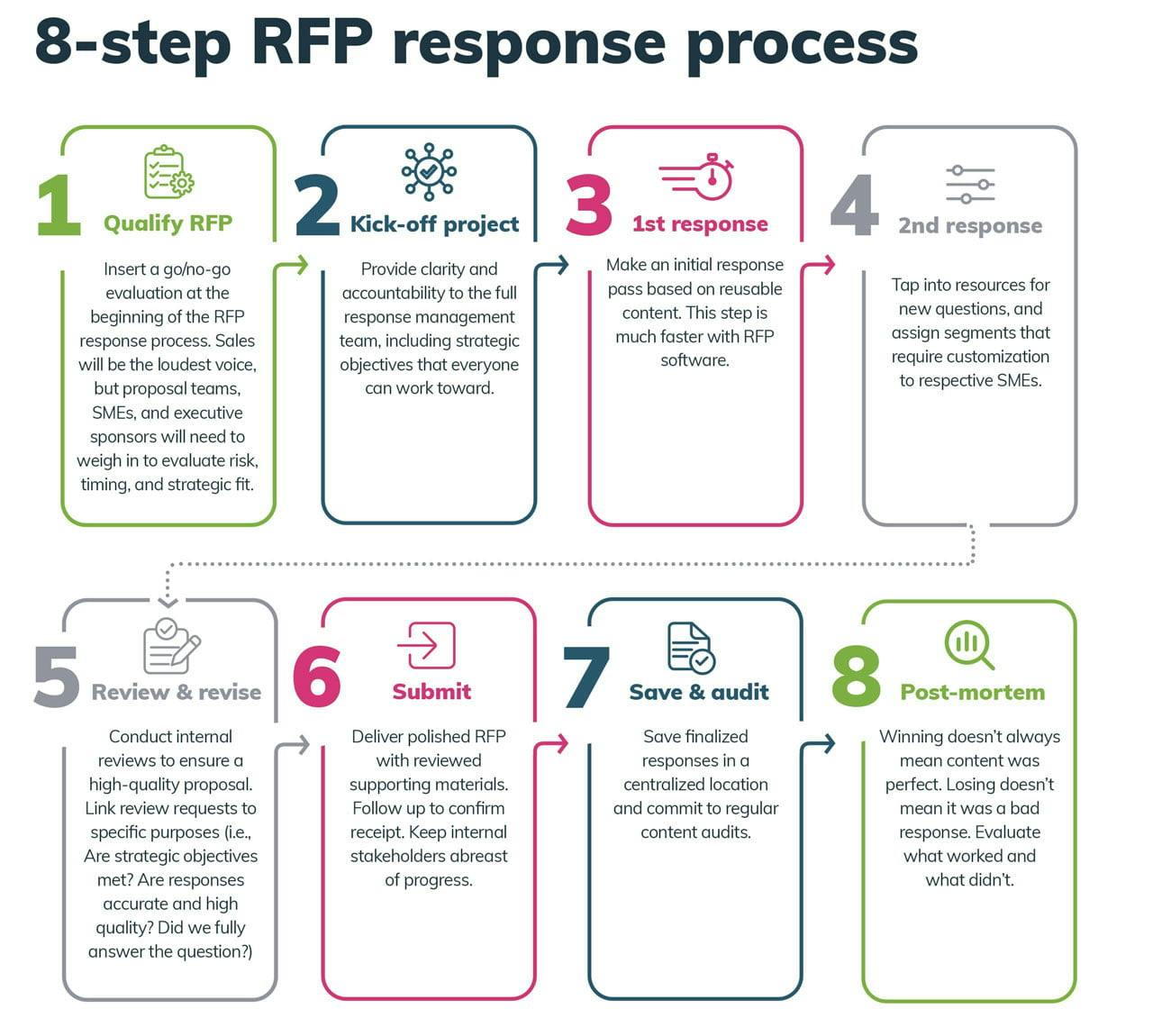“No one can whistle a symphony. It takes an orchestra to play it.” H.E. Luccock once said that.
You need to complete and submit winning RFP responses, and you can’t do it alone. As the conductor, you’ll need the best orchestra members to all play their parts in the RFP response process. Start with the basics—staffing your proposal management team.
Proposal team structure may look different for your organization than someone else’s. You could have three people or 30 on your team, but the goal is the same…simple, efficient, and effective collaboration. Let’s discuss strategies for orchestrating better RFP responses by harmonizing your proposal team structure.
Define response team roles and responsibilities
You need a defined RFP response process to align your team for success. Clarify team roles to build the proposal team structure at the front end. Then, spell out responsibilities by clearly delineating workflow to keep the whole operation running smoothly.
Define team roles
The strongest RFP responses involve expert contributions. Who will contribute high-impact RFP content? Who are your subject matter experts (SMEs) for the various pieces of the puzzle? Get people on board early. And, have a plan in place well before an RFP project lands on your desk.
You’ll need to determine the workload of every RFP project—and understand how to allocate tasks to team members who have strengths in different areas at your organization. Know your resources, everyone from salespeople to graphic designers.
Have backup experts in place so you delegate tasks, without overburdening your proposal team. Also consider outsourcing content reviewers when finalizing RFP deliverables. Because you’re so involved in orchestrating the RFP response process, you’re very close to these projects. A fresh set of eyes on your content ensures optimal RFP performance.
Define your workflow
Fact: RFP responses are complex.
Break down the steps and assign clear action items with specific schedules. You’ll know who is handling each task from the moment the RFP is received to the moment it’s submitted. Once the process is delineated, you’ll use it as a workflow template for all future RFP responses.
RFPIO’s 8-step RFP response process

How RFP software can help
At its core, proposal management is project management. If you simplify your planning process, you’ll have more time for execution. This is where technology like RFP software offers technical and moral support:
- efficiently stores and indexes reusable content,
- tracks progress,
- streamlines data import and export
- provides analytics to guide your next proposal.
In a nutshell, RFP software improves time management and optimizes collaboration.
Who keeps RFP content updated?
According to ourRFPIO Responder Survey, half of proposal managers said their biggest challenge is keeping response content up-to-date and accurate. How can you beat this challenge? It has to be a team effort—you’ll need to delegate.
The approach may vary, based on what your organization looks like. If you’re a smaller team, maybe you assign a full-time content moderator to the whole library. Or in a larger organization, you might assign content reviewing to the corresponding subject matter experts, asking them to own a particular answer or set of answers.
A well-curated RFP content library is the backbone of any proposal team. Everyone is empowered by information. When responding to an RFP, your team needs the right information at the right time to collaborate efficiently.
No matter who is responsible for curating, moderating, and maintaining your content library, proposal management software is a powerful tool for the job.
Proposal management is an iterative process
Now that you have a stronger RFP team structure, establish a mission statement for your RFP response process. A mission statement defines your purpose and unifies everyone for a common, defined goal.
When you foster unity of purpose, you enhance collaboration. People know what they’re helping with and working toward. You’re all strategic partners working toward a shared vision.
Your proposal team is a living, growing, and learning organism. Each time you go through a proposal cycle, you’ll review and rethink things. Use RFP responses as a training mechanism, to guide improvements to your process. Or show new team members good examples of a successful process to get them on board and invested. Share success stories often to inspire new people to join your RFP team.
Support your team’s success with RFPIO
Remember that every ending is a new beginning in the world of proposal teams. Iterative processes foster quality improvement and lead to better RFP responses—which ultimately, win more business for your organization.
As a proposal manager, you’re not just in a support role—you’re a strategic partner with demonstrable value. Be empowered. Orchestrate a better RFP response process with the best possible proposal team structure. Find out how RFPIO leads your proposal management team to greater success.

